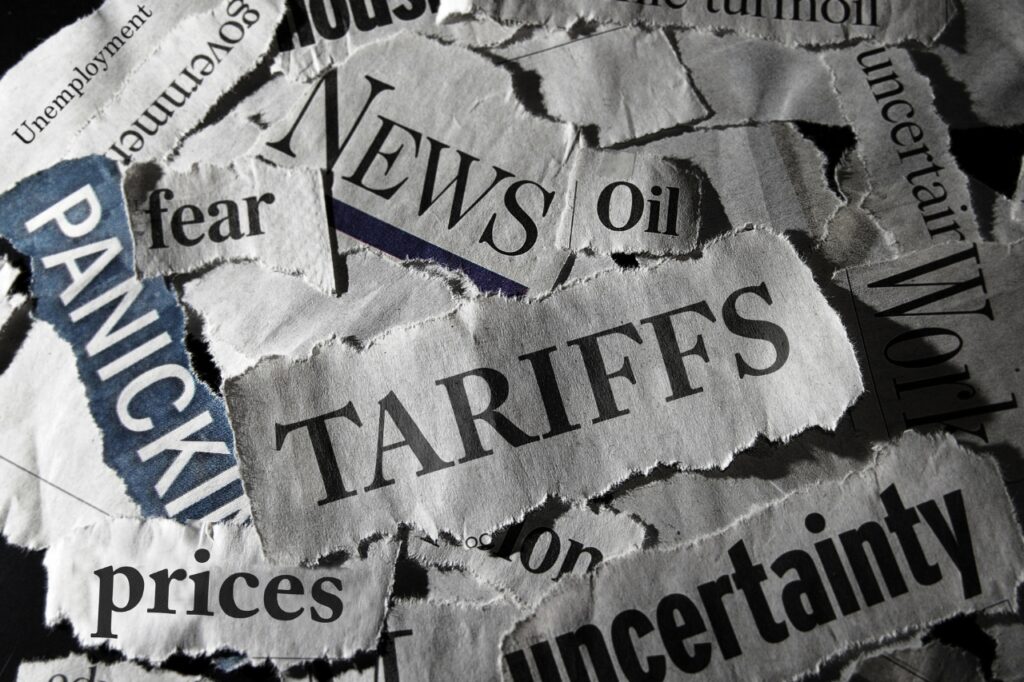Is your supply chain too complex to manage? Can less supply chain complexity lead to more problems?

A Simpler Time
Traditional wisdom tells us that the simpler something is, the less likely it is for something to go wrong, and for many years this was the case. Having a single source or a limited number of trusted transportation carriers wasn’t considered risky but reliable. The value of having a solid relationship with a reliable resource outweighed any potential risk. With few exceptions, delays were temporary and easy to overcome. Then, the perfect storm of labor and supply crises fueled by a global health crisis devastated the supply chain and the workforce, wreaking havoc on the economy. Suddenly having a single supplier or carrier was a tremendous risk as traditional business methods failed.
Simple Supply Chain
A simple supply chain involves a straightforward flow of goods or services from the producer to the end consumer, with few intermediaries involved. For example:
- A farmer grows and harvests wheat
- The farmer sells the grain to a flour mill
- The flour mill processes the wheat into flour
- The flour is sold to a bakery
- The bakery uses the flour to make bread
- The bread is sold to the consumer through a local grocery store
Simple, easy to manage, and not a lot of complexity. One could argue that this type of simplistic supply chain is rare in the modern era. At the same time, while the simple supply chain exists, it’s not the model we manage daily as supply chain professionals. This type of straightforward supply chain consists of only four parties: the farmer, the flour mill, the bakery, and the grocery store; where there is a clear flow of goods from the farmer to the end consumer, and each party adds value to the product as it moves along the supply chain, is typically is reserved for very small local businesses and can easily be managed with spreadsheets.
When larger companies try to operate at a similar level of simplicity, problems emerge quickly, as they did for KFC in the U.K. See the inside story of the great KFC chicken shortage of 2018.
What is a Complex Supply Chain?
Despite what many believe, the term “complex” isn’t inherently negative outside of the field of Psychology. It just means being composed of many interconnected parts. Complexity in the supply chain can be good in certain situations, leading to increased efficiency and resiliency, better risk management, and more innovation. Generally, a complex supply chain is characterized by high stakeholder interdependence and coordination. A complex supply chain may consist of the following:
- Multiple tiers of suppliers, manufacturers, distributors, and retailers
- A diverse set of products and components
- An expansive network of transportation and logistics providers
- Multiple geographic locations
Supply chain complexity may look different in different markets and regions. For example, in the U.S. automotive industry, supply chains have dozens of suppliers providing thousands of parts and components that are later assembled into a finished vehicle. Hundreds of suppliers in the auto industry provide raw materials and specialized components, involving multiple transportation modes to move products and components to the right place.
Similarly, a complex supply chain in the retail industry might involve multiple suppliers providing a range of products, from electronics to food and household goods. Numerous transportation modes (air, sea, land) could move products from suppliers to warehouses and retail stores. The supply chain may also involve a network of distribution centers and logistics providers to manage inventory and order fulfillment.
In this context, complexity isn’t avoidable. It’s critical for the function of the business.
The Upside of Complex Supply Chains
Complex supply chains allow for flow across multiple suppliers and routes, which can help to mitigate the impact of disruptions or shortages in the supply chain. New York City, for example, relies on a complex supply chain to meet its food and beverage needs, which was able to adapt quickly to the disruption caused by Hurricane Sandy in 2012, thanks in part to the flexibility of its supply chain. Having options available is never a bad thing. The agility needed to pivot during an unexpected crisis can make all the difference.
What Are Some of The Advantages That Well-Managed Supply Chain Complexity Can Bring?
Reducing Risk
An agile supply chain should be diverse. Having multiple vendors you can turn to during a materials shortage can be critical; a complex supply chain, by its nature, can improve risk management, reducing the impact of any disruptions in the supply chain. With multiple suppliers and redundancies built into the system, a single point of failure is less likely to halt the entire supply chain.
Increasing Efficiency
Increased efficiency is essential not only because it is a better option from an environmental standpoint but customers are seeking more and more from their business partners. It can also lead to lower costs. Increasing efficiency in workflows, production, or transportation allows for the specialization of tasks and the ability to use economies of scale. Different suppliers and manufacturers can then focus on their specific areas of expertise, resulting in higher quality and lower costs.
Boosting Innovation
A complex supply chain can lead to greater innovation. By working with multiple suppliers and partners, a company benefits from diverse perspectives and ideas, which can lead to new and innovative solutions to business challenges.
Managing Supply Chain Complexity with GAINS
Managing a complex supply chain requires careful planning, coordination, and monitoring to ensure it remains effective and efficient over time. When managed effectively, supply chain complexity can be a positive force for companies looking to stay competitive and innovative in a rapidly changing business environment. However, if not appropriately managed, complexity can quickly dissolve into chaos.
The answer is not to take the complexity out of your supply chain. It is to manage it effectively. GAINS has empirically proven options for companies of any size to manage the complexity of their supply chain simply.
Optimization-as-a-Service
Companies can now achieve the benefits of Supply Chain Optimization without needing the resources for a new software solution. Optimization-as-a-Service, or OASIS, from GAINS does not require software implementation, integrations, system training, or taxing of I.T. resources.
OASIS provides optimized recommendations driven by GAINS-proven algorithms, including:
- What to stock, how much, and where
- Optimal Service Level Targeting for stocked items
- Multi-echelon strategies within BOMs
- Includes raw/purchased & semi-finished goods optimization
- Provides optimized postponement/delayed-differentiation strategies
- Distribution deployment optimization
- Inventory parameters – Safety and Cycle Stock (Order) Quantities that precisely achieve optimal goals
This solution is one of many ways that GAINS can help supply chain professionals worldwide manage the ever-increasing supply chain complexity better. GAINS partners with companies like yours to improve accuracy, increase efficiency, and simplify the management and planning processes.
Please get in touch with GAINS here to learn more about how we can help your business and to see a demo of our solution.
Suggested Reading:
The Arguments Against Using Excel for Supply Chain Management
The critical role of agility in supply chain
Speed, Flexibility, and Why “Traditional” Planning Methods Just Aren’t Enough



